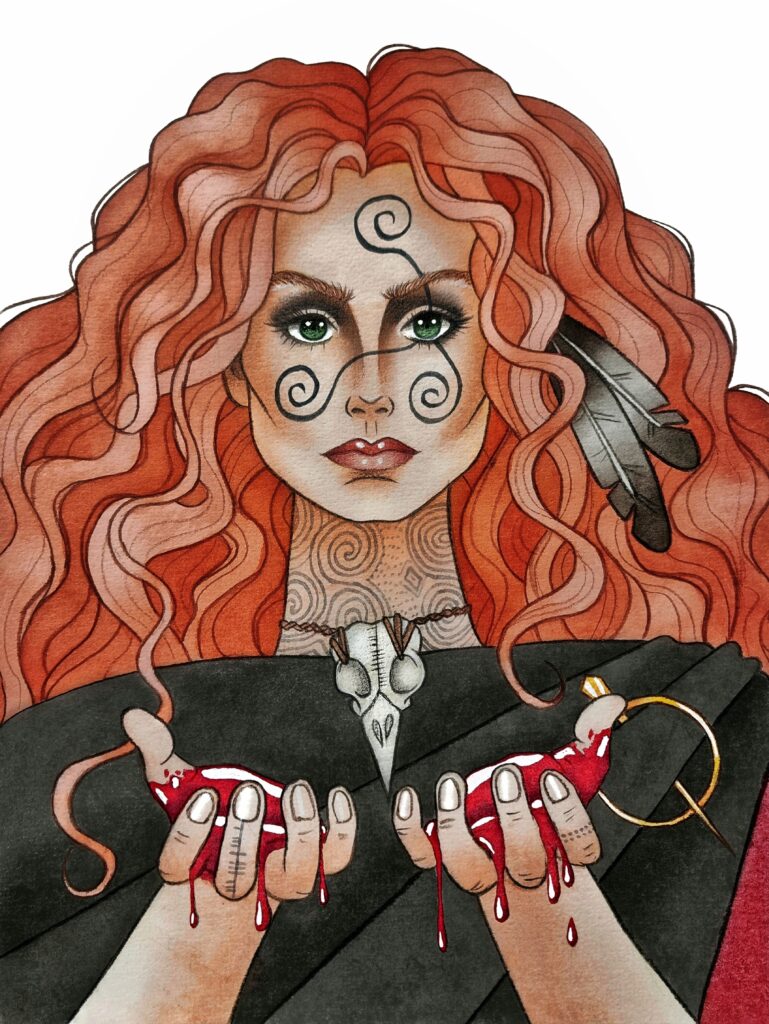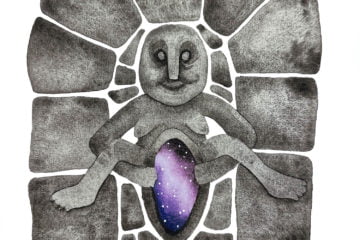
If you have even a passing interest in Irish mythology then you have likely come across The Morrígan being referenced online and in books.
She is an immensely popular figure, and is associated by many with death, prophesy, fate, war, battle, victory and magic. She has many guises both human and animal. She has appeared in stories as a beautiful young woman, an old weathered crone, a wolf, an eel, a cow, and perhaps most famously as a crow or a raven.
Sometimes considered to have been a triple goddess, she was thought to have been the daughter of Ernmas and Delbáeth and the sister to Macha and Badb. She was also thought to have been a wife or lover to the Daghda and possible bore him a child named Adair, though her family history is somewhat hazy.
Different Portrayals
Over time many different versions of her persona have come and gone. She has been linked to the Banshee of later Irish folklore, and some people have linked her to Morgan Le Fay from Welsh mythology (though this is likely wishful thinking).
Countless retellings of her stories combined with some efforts by the Church to rewrite her as a monstrous figure have made it difficult to know exactly what she was to the ancient people of Ireland. Though in the texts and stories that we have available to us she has several important appearances.

The Battle of Moytura
One of her first appearances is in the Cath Maighe Tuireadh, or the Battle of Moytura, where she plays a key role in the conflicts. These battles took place in modern day Connaught, and occurred 3000 years ago when the Tuatha de Danann fought the Fir Bolgs in the First Battle of Moytura, and the Fomorians in the Second Battle of Moytura.
In both battles she is shown to be a powerful and influential magician and warrior, however in the second battle she assumes more the role of a Battle Goddess and Prophet. Just before the second battle she lay with the Daghda, and as a reward to him she offered strategy for the upcoming battle, and promised to call of the druids of Ireland to assist in the effort. She flew above the battlefield shrieking and raining fire and blood down on their enemies until eventually they were defeated and their leader, Balor the giant, was killed by Lugh.
Prophecies of the Morrigan
At the close of the battle she spoke a famous prophecy foreseeing a time of peace, that goes as follows;
Peace to the sky
Sky to the earth
Earth beneath sky
Strength in each man
A cup full of honey
Honour enough
Summer in Winter
Spear supported by shield
Shields supported by forts
Forts fierce and eager for battle
Fleece from sheep
Woods full of stags
Forever destructions have departed
Fruit on trees
A branch drooping down
Drooping from growth
Wealth for a son
A son very learned
Neck of bull in yoke
A bull from a song
Knots in woods
Wood for a fire
Fire as wanted
Walls new and bright
Salmon their victory
The Boyne their hostel
Hostel of excellent size
New growth after Spring
In Autumn horses increase
The land held secure
Land recounted with excellence of word
Be might to the eternal much excellent woods
Peace as high as the sky
Be nine times eternal
However, on this day the Morrigan also prophesied the end of the world in a terrifying vision that went as follows;
I shall not see a world that will be dear to me.
Summer without flowers, cows without milk,
Women without conscience, men not brave,
Conquests without a king,
Woods without fruit, fishless seas,
Bad judgements by old men,
False precedents of the lawgivers.
Every man a betrayer, each son a robber,
The son will enter the father’s bed
The father also in the bed of the son,
A brother becomes his own brother in law.
None will look for a woman outside his own house.
Oh evil time, son will deceive father, daughter will deceive mother.
Relationship with Cú Chulainn
Other famous tales of the Morrigan detail her tumultuous relationship with the hero Cú Chulainn, which started around the time that he fought to defend Ulster from the army of Connaught, led by Queen Medb.
In these stories The Morrigan attempts to seduce Cú Chulainn in between battles, before his final defeat of the advancing warriors. She offers him her aid in the battle along with her love. He rejects her advances despite her great beauty, and in her outrage she vows to take her vengeance during the next battle.
True to her word, in the next battle she uses her abilities to shape-shift into an eel and trips the hero as he crosses a fjord. He retaliates and breaks the ribs of the eel. Hurt, she transforms again, this time into a wolf. She uses this form to drive a herd of cattle at him but again he bests her by firing a sling-shot and blinding her in one eye. Once more she transforms, taking he shape of a cow and leading a stampede towards him. Firing again from his slingshot he breaks her leg and she retreats, defeated and enraged.
After the battle, the victorious Cú Chulainn encounters an old hag milking a cow. She is lame, and blind in one eye with an injury to her ribs. Not recognizing her, he accepts her offer of milk, and with each drink he blesses her and heals her wounds. Once he realises who she is he regrets healing her, saying that had he known her true identity he would not have done so.
Before his death, he meets her once more. This time she appears as an old woman, washing his bloody armour in a ford. Later on in the story he is mortally wounded, and ties himself to a standing stone with his own entrails so that he can die on his feet. It is only when a black crow lands on his shoulder that he is known by his enemies to be dead.


